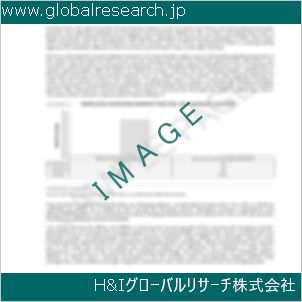1 Materials for Power Battery Market Overview
1.1 Product Definition
1.2 Materials for Power Battery Segment by Type
1.2.1 Global Materials for Power Battery Market Value Growth Rate Analysis by Type 2022 VS 2029
1.2.2 Cathode Material
1.2.3 Anode Materials
1.2.4 Lithium-Ion Battery Separator
1.2.5 Electrolyte
1.3 Materials for Power Battery Segment by Application
1.3.1 Global Materials for Power Battery Market Value Growth Rate Analysis by Application: 2022 VS 2029
1.3.2 New Energy Vehicles
1.3.3 Electric Bicycles
1.3.4 Electric Motorcycle
1.4 Global Market Growth Prospects
1.4.1 Global Materials for Power Battery Production Value Estimates and Forecasts (2018-2029)
1.4.2 Global Materials for Power Battery Production Capacity Estimates and Forecasts (2018-2029)
1.4.3 Global Materials for Power Battery Production Estimates and Forecasts (2018-2029)
1.4.4 Global Materials for Power Battery Market Average Price Estimates and Forecasts (2018-2029)
1.5 Assumptions and Limitations
2 Market Competition by Manufacturers
2.1 Global Materials for Power Battery Production Market Share by Manufacturers (2018-2023)
2.2 Global Materials for Power Battery Production Value Market Share by Manufacturers (2018-2023)
2.3 Global Key Players of Materials for Power Battery, Industry Ranking, 2021 VS 2022 VS 2023
2.4 Global Materials for Power Battery Market Share by Company Type (Tier 1, Tier 2 and Tier 3)
2.5 Global Materials for Power Battery Average Price by Manufacturers (2018-2023)
2.6 Global Key Manufacturers of Materials for Power Battery, Manufacturing Base Distribution and Headquarters
2.7 Global Key Manufacturers of Materials for Power Battery, Product Offered and Application
2.8 Global Key Manufacturers of Materials for Power Battery, Date of Enter into This Industry
2.9 Materials for Power Battery Market Competitive Situation and Trends
2.9.1 Materials for Power Battery Market Concentration Rate
2.9.2 Global 5 and 10 Largest Materials for Power Battery Players Market Share by Revenue
2.10 Mergers & Acquisitions, Expansion
3 Materials for Power Battery Production by Region
3.1 Global Materials for Power Battery Production Value Estimates and Forecasts by Region: 2018 VS 2022 VS 2029
3.2 Global Materials for Power Battery Production Value by Region (2018-2029)
3.2.1 Global Materials for Power Battery Production Value Market Share by Region (2018-2023)
3.2.2 Global Forecasted Production Value of Materials for Power Battery by Region (2024-2029)
3.3 Global Materials for Power Battery Production Estimates and Forecasts by Region: 2018 VS 2022 VS 2029
3.4 Global Materials for Power Battery Production by Region (2018-2029)
3.4.1 Global Materials for Power Battery Production Market Share by Region (2018-2023)
3.4.2 Global Forecasted Production of Materials for Power Battery by Region (2024-2029)
3.5 Global Materials for Power Battery Market Price Analysis by Region (2018-2023)
3.6 Global Materials for Power Battery Production and Value, Year-over-Year Growth
3.6.1 North America Materials for Power Battery Production Value Estimates and Forecasts (2018-2029)
3.6.2 Europe Materials for Power Battery Production Value Estimates and Forecasts (2018-2029)
3.6.3 China Materials for Power Battery Production Value Estimates and Forecasts (2018-2029)
3.6.4 Japan Materials for Power Battery Production Value Estimates and Forecasts (2018-2029)
4 Materials for Power Battery Consumption by Region
4.1 Global Materials for Power Battery Consumption Estimates and Forecasts by Region: 2018 VS 2022 VS 2029
4.2 Global Materials for Power Battery Consumption by Region (2018-2029)
4.2.1 Global Materials for Power Battery Consumption by Region (2018-2023)
4.2.2 Global Materials for Power Battery Forecasted Consumption by Region (2024-2029)
4.3 North America
4.3.1 North America Materials for Power Battery Consumption Growth Rate by Country: 2018 VS 2022 VS 2029
4.3.2 North America Materials for Power Battery Consumption by Country (2018-2029)
4.3.3 U.S.
4.3.4 Canada
4.4 Europe
4.4.1 Europe Materials for Power Battery Consumption Growth Rate by Country: 2018 VS 2022 VS 2029
4.4.2 Europe Materials for Power Battery Consumption by Country (2018-2029)
4.4.3 Germany
4.4.4 France
4.4.5 U.K.
4.4.6 Italy
4.4.7 Russia
4.5 Asia Pacific
4.5.1 Asia Pacific Materials for Power Battery Consumption Growth Rate by Region: 2018 VS 2022 VS 2029
4.5.2 Asia Pacific Materials for Power Battery Consumption by Region (2018-2029)
4.5.3 China
4.5.4 Japan
4.5.5 South Korea
4.5.6 China Taiwan
4.5.7 Southeast Asia
4.5.8 India
4.6 Latin America, Middle East & Africa
4.6.1 Latin America, Middle East & Africa Materials for Power Battery Consumption Growth Rate by Country: 2018 VS 2022 VS 2029
4.6.2 Latin America, Middle East & Africa Materials for Power Battery Consumption by Country (2018-2029)
4.6.3 Mexico
4.6.4 Brazil
4.6.5 Turkey
5 Segment by Type
5.1 Global Materials for Power Battery Production by Type (2018-2029)
5.1.1 Global Materials for Power Battery Production by Type (2018-2023)
5.1.2 Global Materials for Power Battery Production by Type (2024-2029)
5.1.3 Global Materials for Power Battery Production Market Share by Type (2018-2029)
5.2 Global Materials for Power Battery Production Value by Type (2018-2029)
5.2.1 Global Materials for Power Battery Production Value by Type (2018-2023)
5.2.2 Global Materials for Power Battery Production Value by Type (2024-2029)
5.2.3 Global Materials for Power Battery Production Value Market Share by Type (2018-2029)
5.3 Global Materials for Power Battery Price by Type (2018-2029)
6 Segment by Application
6.1 Global Materials for Power Battery Production by Application (2018-2029)
6.1.1 Global Materials for Power Battery Production by Application (2018-2023)
6.1.2 Global Materials for Power Battery Production by Application (2024-2029)
6.1.3 Global Materials for Power Battery Production Market Share by Application (2018-2029)
6.2 Global Materials for Power Battery Production Value by Application (2018-2029)
6.2.1 Global Materials for Power Battery Production Value by Application (2018-2023)
6.2.2 Global Materials for Power Battery Production Value by Application (2024-2029)
6.2.3 Global Materials for Power Battery Production Value Market Share by Application (2018-2029)
6.3 Global Materials for Power Battery Price by Application (2018-2029)
7 Key Companies Profiled
7.1 Umicore
7.1.1 Umicore Materials for Power Battery Corporation Information
7.1.2 Umicore Materials for Power Battery Product Portfolio
7.1.3 Umicore Materials for Power Battery Production, Value, Price and Gross Margin (2018-2023)
7.1.4 Umicore Main Business and Markets Served
7.1.5 Umicore Recent Developments/Updates
7.2 Targray
7.2.1 Targray Materials for Power Battery Corporation Information
7.2.2 Targray Materials for Power Battery Product Portfolio
7.2.3 Targray Materials for Power Battery Production, Value, Price and Gross Margin (2018-2023)
7.2.4 Targray Main Business and Markets Served
7.2.5 Targray Recent Developments/Updates
7.3 LG Chem
7.3.1 LG Chem Materials for Power Battery Corporation Information
7.3.2 LG Chem Materials for Power Battery Product Portfolio
7.3.3 LG Chem Materials for Power Battery Production, Value, Price and Gross Margin (2018-2023)
7.3.4 LG Chem Main Business and Markets Served
7.3.5 LG Chem Recent Developments/Updates
7.4 BTR New Energy
7.4.1 BTR New Energy Materials for Power Battery Corporation Information
7.4.2 BTR New Energy Materials for Power Battery Product Portfolio
7.4.3 BTR New Energy Materials for Power Battery Production, Value, Price and Gross Margin (2018-2023)
7.4.4 BTR New Energy Main Business and Markets Served
7.4.5 BTR New Energy Recent Developments/Updates
7.5 Shanshan Technology
7.5.1 Shanshan Technology Materials for Power Battery Corporation Information
7.5.2 Shanshan Technology Materials for Power Battery Product Portfolio
7.5.3 Shanshan Technology Materials for Power Battery Production, Value, Price and Gross Margin (2018-2023)
7.5.4 Shanshan Technology Main Business and Markets Served
7.5.5 Shanshan Technology Recent Developments/Updates
7.6 Showa Denko K.K.
7.6.1 Showa Denko K.K. Materials for Power Battery Corporation Information
7.6.2 Showa Denko K.K. Materials for Power Battery Product Portfolio
7.6.3 Showa Denko K.K. Materials for Power Battery Production, Value, Price and Gross Margin (2018-2023)
7.6.4 Showa Denko K.K. Main Business and Markets Served
7.6.5 Showa Denko K.K. Recent Developments/Updates
7.7 Kureha Battery Materials
7.7.1 Kureha Battery Materials Materials for Power Battery Corporation Information
7.7.2 Kureha Battery Materials Materials for Power Battery Product Portfolio
7.7.3 Kureha Battery Materials Materials for Power Battery Production, Value, Price and Gross Margin (2018-2023)
7.7.4 Kureha Battery Materials Main Business and Markets Served
7.7.5 Kureha Battery Materials Recent Developments/Updates
7.8 Mitsubishi Chemical
7.8.1 Mitsubishi Chemical Materials for Power Battery Corporation Information
7.8.2 Mitsubishi Chemical Materials for Power Battery Product Portfolio
7.8.3 Mitsubishi Chemical Materials for Power Battery Production, Value, Price and Gross Margin (2018-2023)
7.8.4 Mitsubishi Chemical Main Business and Markets Served
7.7.5 Mitsubishi Chemical Recent Developments/Updates
7.9 Asahi Kasei
7.9.1 Asahi Kasei Materials for Power Battery Corporation Information
7.9.2 Asahi Kasei Materials for Power Battery Product Portfolio
7.9.3 Asahi Kasei Materials for Power Battery Production, Value, Price and Gross Margin (2018-2023)
7.9.4 Asahi Kasei Main Business and Markets Served
7.9.5 Asahi Kasei Recent Developments/Updates
7.10 Sumitomo Corporation
7.10.1 Sumitomo Corporation Materials for Power Battery Corporation Information
7.10.2 Sumitomo Corporation Materials for Power Battery Product Portfolio
7.10.3 Sumitomo Corporation Materials for Power Battery Production, Value, Price and Gross Margin (2018-2023)
7.10.4 Sumitomo Corporation Main Business and Markets Served
7.10.5 Sumitomo Corporation Recent Developments/Updates
7.11 Toray
7.11.1 Toray Materials for Power Battery Corporation Information
7.11.2 Toray Materials for Power Battery Product Portfolio
7.11.3 Toray Materials for Power Battery Production, Value, Price and Gross Margin (2018-2023)
7.11.4 Toray Main Business and Markets Served
7.11.5 Toray Recent Developments/Updates
7.12 CATL
7.12.1 CATL Materials for Power Battery Corporation Information
7.12.2 CATL Materials for Power Battery Product Portfolio
7.12.3 CATL Materials for Power Battery Production, Value, Price and Gross Margin (2018-2023)
7.12.4 CATL Main Business and Markets Served
7.12.5 CATL Recent Developments/Updates
8 Industry Chain and Sales Channels Analysis
8.1 Materials for Power Battery Industry Chain Analysis
8.2 Materials for Power Battery Key Raw Materials
8.2.1 Key Raw Materials
8.2.2 Raw Materials Key Suppliers
8.3 Materials for Power Battery Production Mode & Process
8.4 Materials for Power Battery Sales and Marketing
8.4.1 Materials for Power Battery Sales Channels
8.4.2 Materials for Power Battery Distributors
8.5 Materials for Power Battery Customers
9 Materials for Power Battery Market Dynamics
9.1 Materials for Power Battery Industry Trends
9.2 Materials for Power Battery Market Drivers
9.3 Materials for Power Battery Market Challenges
9.4 Materials for Power Battery Market Restraints
10 Research Finding and Conclusion
11 Methodology and Data Source
11.1 Methodology/Research Approach
11.1.1 Research Programs/Design
11.1.2 Market Size Estimation
11.1.3 Market Breakdown and Data Triangulation
11.2 Data Source
11.2.1 Secondary Sources
11.2.2 Primary Sources
11.3 Author List
11.4 Disclaimer
| ※参考情報 動力電池は、主に電気自動車(EV)やハイブリッド自動車(HEV)、または各種の省エネルギー機器に使用されるエネルギー貯蔵デバイスであり、電力を蓄え、必要に応じて電気エネルギーを供給することができる重要な技術です。動力電池用材料は、これらの電池の性能、効率、安全性、コストに直接影響を与えるため、電池技術の進化には欠かせない要素となっています。 動力電池用材料の定義は、電池が正常に動作するために必要な機能を持つ全ての構成要素を指します。これには、正極材料、負極材料、電解質、隔膜、導電剤、バインダーなどが含まれます。各材料は、それぞれの役割を持ち、電池の充放電サイクルにおいて重要な働きをしています。 動力電池用材料の特徴としては、高性能と長寿命が求められます。具体的には、高いエネルギー密度と出力密度が必要であり、短時間で充電・放電可能であることが望まれます。また、温度変化や過充電、過放電に対する安定性も重要なポイントです。さらに、コスト効率、環境への配慮、持続可能性なども現代の動力電池技術には不可欠な要素です。 動力電池用材料は、主に以下の種類に分類されます。一つ目は正極材料です。リチウムイオン電池の代表的な正極材料には、リチウムコバルト酸化物(LCO)、リチウム鉄リン酸(LFP)、リチウムニッケルコバルトマンガン酸化物(NMC)、リチウムニッケルコバルトアルミニウム酸化物(NCA)などがあります。各材料は、それぞれ異なる特性を持ち、エネルギー密度や安全性、コストに応じた選択がされます。 二つ目は負極材料です。リチウムイオン電池の負極には、グラファイトが一般的に使用されますが、シリコンやリチウムチタン酸も注目されています。シリコンは、高いエネルギー密度を持つため、未来の負極材料としての可能性が期待されています。ただし、体積膨張の問題があるため、実用化に向けた研究が進められています。 三つ目は電解質です。一般的なリチウムイオン電池では、液体の有機電解質が使用されますが、固体電解質の研究も進んでいます。固体電解質は、高い安全性やエネルギー密度が期待されており、次世代電池としての可能性を秘めています。 隔膜は、正極と負極の間に置かれ、短絡を防ぐ役割を果たします。主にポリプロピレン(PP)やポリエチレン(PE)などの高分子材料が用いられています。導電剤やバインダーは、電極材料同士の接触を良好にし、充放電効率を向上させる役割を果たします。 用途としては、電気自動車やハイブリッド車の他にも、エネルギー貯蔵システム(ESS)や携帯型デバイス、電動工具、無人搬送車(AGV)など、多岐にわたります。特に近年では、再生可能エネルギーと組み合わせたエネルギー管理システムが重要視されており、動力電池の役割はますます増しています。 関連技術としては、電池の生産技術やリサイクル技術が挙げられます。生産技術の進化により、より高品質かつコスト効率の良い電池が製造可能になっています。リサイクル技術も、安全性や環境負荷の観点からますます重要になってきており、使用済み電池から貴重な資源を回収する技術が開発されています。 加えて、動力電池の安全性を向上させるための研究も活発に行われています。火災や爆発を防ぐための試みや、異常時監視技術が導入されるなど、安全性の向上が図られています。 動力電池用材料の研究は、電動化社会の実現に向けて今後も進展していくことでしょう。新材料の開発や既存材料の改良、さらには製造プロセスの革新が求められています。このような取り組みにより、次世代のエネルギー貯蔵技術が実現し、持続可能な社会の実現に寄与することが期待されています。 未来に向けて、動力電池用材料の研究開発は更なる進化を遂げるでしょう。新たな材料や技術の導入により、性能の向上やコストの低減、安全性の強化が実現されることで、多様な用途において電力供給の担い手として重要な役割を果たすことが期待されています。このような進展は、電気自動車の普及のみならず、再生可能エネルギーの活用、さらには国内外のエネルギー政策にも影響を与えるでしょう。動力電池用材料は、その特性や種類、用途が多岐にわたるため、今後も技術革新や市場動向に注目が必要です。 |
❖ 免責事項 ❖
http://www.globalresearch.jp/disclaimer












